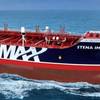Maersk’s New Latin American Service Calls on Port of Savannah
West Coast South America Service connects Georgia exports to Ecuador and Peru
Georgia Ports Authority’s (GPA) Executive Director Curtis J. Foltz announced that Maersk has added the Port of Savannah to its newest all-water service, Spondylus. Named for the seashell that once was used as currency for trade by Andeans in Ecuador, the new service will call on Savannah weekly.
“We appreciate Maersk’s confidence in our ability to handle its container volume now and in the future,” said Foltz. “The Port of Savannah offers a logistically friendly location with two on-terminal rail providers and immediate access to two interstate highways, which helps us attract additional cargo.”
The service first called on Garden City Terminal on February 23, 2011. The Spondylus service deploys four vessels with 1,700-TEU (twenty-foot equivalent unit) capacity and is expected to bring about 22,000 TEUs annually through Savannah. Port rotation includes: Savannah, Miami, Manzanillo, Balboa, Esmeraldas, Paita, Guayaquil, New York/New Jersey and Philadelphia.
Georgia exporters have a great opportunity to ship woodpulp and paperboard directly from Savannah to Ecuador and Peru to make cartons for fruit shipments. This packaging is then used to carry fruits and vegetable products on the Spondylus service to Savannah, the established gateway for refrigerated container cargo in the South Atlantic.
The primary import commodities from the region in addition to fruits and vegetables are lumber, plywood, fish and foodstuffs.
"As the second largest port on the U.S. East Coast, the Port of Savannah is quickly expanding its Latin American reach with nine services,” said GPA’s Chief Commercial Officer Clifford R. Pyron.
Georgia’s deepwater ports and inland barge terminals support more than 295,000 jobs throughout the state annually and contribute $15.5 billion in income, $61.7 billion in revenue and $2.6 billion in state and local taxes to Georgia’s economy. The Port of Savannah handled 8.6 percent of the U.S. containerized cargo volume and 12.4 percent of all U.S. containerized exports in 2010.
Source: GPA













